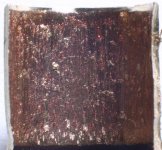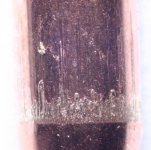C
chappo555
Guest
The most significant step in reloading is the first step you take from the reloading bench and having that feeling that youve put together the best rounds you can with your equipment and experience.
and in what type of shooting are we talking ??
hunting, dangerous game.varmints....factory guns...custom guns ???
what..
mike in co
mike in co, please read before responding. This makes you look foolish.
"Which step contributes most with visible improved match results in order of preference."
I am trying to establish the most useful step for members who have limited financial resources when starting out reloading
If the cases are to long or being pinched by the carbon ring....nothing else matters...not neck tension...not seating depth....not powder charge...because they will NEVER EVER shoot if they are to long.
There are so many things that make ammo accurate and each one of them can destroy accuarcy.....it's like asking what the most important part of a car is....
Now after them cases are the correct length...
1. Bullet
2. Concentricity
3. Seating depth
4. Powder charge
5. Primer
6. Cases
Hovis
I stick by my answer and in reference to the original post...please try to break it. Pay attention to all these and understand their place and effect on ammunition and things will fall in place. Add the additional variables for a specifice discipline and all will be well.
Hovis
The most significant step in reloading is the first step you take from the reloading bench and having that feeling that youve put together the best rounds you can with your equipment and experience.




A friend, who loads for various varmint rifles, and who is as meticulous with his reloading as any competition shooter, , annealed all of his brass last year. In preparing fro this year's annual, out of state prairie dog hunt. Instead of reporting his usual frustration from his rifle check trip to the range, he was beaming as he told me of his results. He said that the difference in uniformity in bullet seating force was quite noticeable, and that he credits this years better results to that, and that to the annealing. He started out with the Hornady kits, eventually developing the experience to be able to discontinue the use of the Templaq in favor of simply watching the progress of the color change down the case till it was a quarter of an inch below the shoulder. This was made easier by his cleaning his cases with a vibratory cleaner.
The reason that I have not tried this with my 6PPC loading is that I use 133, and it seems to like a lot of neck tension, which annealing would undoubtedly reduce. For that reason, I am reduced to sorting as to bullet seating force, by feel.
Accuracy is a weakest link thing. I often meet shooters, who do not compete, that choose to ignore one or more of the links, and by doing so, IMO, they are are self limiting.
Number 1:
Starting out with the best brass available!!!!!!!!!!!!!!!
and in what type of shooting are we talking ??
hunting, dangerous game.varmints....factory guns...custom guns ???
what..
mike in co
no it does not make me look foolish....
you just do not understand that different disciplines require different accuracy.....
they guy later lists three disciplines and wants one answer...i do not think there is one answer.....
please engage your brain before posting.
very little work is required to produce accurate ammo for "tactical" shooting...some guys shoot factory ammo.....
its is in fact trying to compare apples to oranges to pears......it aint gonna happen.
i doubt you could get everyone to agree on THE one step in br ammo making .....
mike in co
mike in co,
At which point in his post does he mention "dangerous game" or "varmints"? If you're saying that you did read the original post, there are problems with your reading skills. I stand corrected on calling you foolish. It's most likely a reading comprehension issue. I am sorry.
Regards,
davejones
